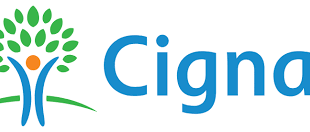Introduction to student loans
Are you ready to take the next step in your education but feeling overwhelmed by the costs? Student loans can be a valuable tool to help fund your academic journey. Understanding the different types of student loans available and their requirements is essential in making an informed decision. Whether you’re a prospective student or already enrolled, this guide will walk you through the easiest student loans to get and provide tips on choosing the best option for your future. Let’s dive in!
Types of student loans available
When it comes to financing higher education, there are various types of student loans available to help students cover the costs associated with tuition, books, and living expenses during their academic journey.
One common type of student loan is federal loans, which are offered by the government. These loans typically have lower interest rates and more flexible repayment options compared to private loans.
On the other hand, private student loans are provided by banks or financial institutions. They often require a credit check or a co-signer and may have higher interest rates than federal loans.
Another option is subsidized versus unsubsidized federal loans. Subsidized loans are based on financial need, while unsubsidized loans are not need-based but still offer competitive terms.
Additionally, some students opt for parent PLUS loans or refinancing options later in their academic careers to adjust their loan terms as needed.
Federal student loans and their requirements
Federal student loans are a popular option for students seeking financial aid to cover their educational expenses. These loans are funded by the government and typically have lower interest rates compared to private loans. To qualify for federal student loans, applicants must be U.
S. citizens or eligible non-citizens, enrolled at least half-time in an accredited program, and demonstrate financial need.
One of the most common types of federal student loans is the Direct Subsidized Loan, which is based on financial need. Another type is the Direct Unsubsidized Loan, available to both undergraduate and graduate students regardless of financial need. Additionally, there are PLUS Loans for parents of dependent undergraduate students.
To apply for federal student loans, students must complete the Free Application for Federal Student Aid (FAFSA) form annually. The amount awarded depends on factors like tuition costs and expected family contributions. It’s important to stay informed about loan limits and repayment options when considering federal student loans as a funding source for education.
Private student loans and their requirements
Private student loans are another option for funding college, offered by banks, credit unions, and online lenders. Unlike federal loans, private loans require a credit check to determine the borrower’s creditworthiness. This means that having a good credit score or a cosigner with good credit is often necessary to qualify for a private loan.
Interest rates on private student loans can vary depending on the lender and the borrower’s financial situation. Some lenders may offer fixed interest rates while others offer variable rates. Additionally, repayment terms and options may differ from federal loans, so it’s essential to understand all the details before committing.
Keep in mind that private student loans do not typically offer the same benefits as federal loans such as income-driven repayment plans or loan forgiveness programs. Borrowers should carefully consider their options and compare offers from different lenders to find the best terms for their situation.
Comparison between federal and private student loans
When it comes to financing your education, understanding the differences between federal and private student loans is key.
Federal student loans are backed by the government and typically offer lower interest rates compared to private loans. They also come with flexible repayment options, such as income-driven plans and loan forgiveness programs.
On the other hand, private student loans are offered by banks, credit unions, and online lenders. While they may have higher interest rates than federal loans, they could be a good option for borrowers who have a strong credit history or need additional funds beyond what federal loans can provide.
One major distinction between the two is that federal loans do not require a credit check or cosigner for most borrowers, making them more accessible to students with limited credit history.
In contrast, private student loans often necessitate a credit check and may require a cosigner if the borrower doesn’t meet certain criteria. It’s essential to carefully consider all aspects before deciding on which type of loan best suits your needs.
Alternative options for funding education
When it comes to funding your education, student loans aren’t the only option available. Alternative ways to finance your studies can provide flexibility and potentially lower costs in the long run.
Scholarships and grants are a popular choice for many students. These forms of financial aid don’t need to be repaid, making them a valuable resource for reducing the overall cost of education.
Work-study programs offer students the opportunity to earn money while gaining work experience on campus or in their field of study. This can help offset tuition expenses and provide valuable skills for future employment.
Crowdfunding platforms have become increasingly popular for students looking to raise funds for their education. By sharing their story online, students can attract donations from friends, family, and even strangers who support their educational goals.
Part-time work is another common way for students to fund their education. Balancing work with studies requires discipline but can help cover living expenses and reduce reliance on loans.
Tips for choosing the best loan option
When it comes to choosing the best student loan, there are a few key tips to keep in mind. First and foremost, make sure you understand the terms and conditions of each loan option available to you. Take note of interest rates, repayment plans, and any potential fees associated with the loan.
Consider starting with federal student loans as they often come with lower interest rates and more flexible repayment options compared to private loans. However, if federal loans don’t cover all your expenses, look into private loans from reputable lenders.
It’s essential to compare offers from different lenders before making a decision. Don’t be swayed by flashy marketing tactics; focus on finding a loan that suits your financial needs without burdening you with excessive debt.
Additionally, think about your future earning potential when deciding how much to borrow. It’s crucial to strike a balance between funding your education and being able to comfortably repay the loan after graduation.
Seek guidance from financial aid advisors or professionals who can provide personalized advice based on your individual circumstances. Making an informed decision now will set you up for financial success in the long run.
Conclusion
Student loans play a crucial role in helping students fund their education and achieve their academic goals. When considering the easiest student loan to get, it’s essential to weigh the options available carefully.
Federal student loans are generally easier to qualify for, with minimal credit requirements and flexible repayment options. However, private student loans offer higher loan limits but may require a cosigner or a good credit history.
It is important to explore all available resources for funding education, such as scholarships, grants, work-study programs, and personal savings before turning to student loans.
When choosing a loan option, consider factors like interest rates, repayment terms, fees involved, and overall financial impact after graduation. It’s crucial to borrow only what you need and can comfortably repay in the future.
In conclusion,
Careful consideration of all aspects of student loans is vital in making an informed decision that aligns with your financial situation and educational needs. By understanding the different types of loans available and their requirements, you can choose the easiest student loan that best suits your circumstances while setting yourself up for success in your academic journey.





